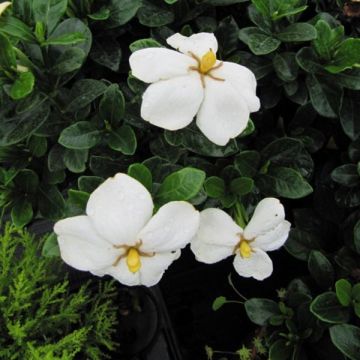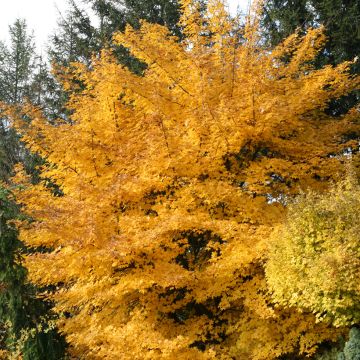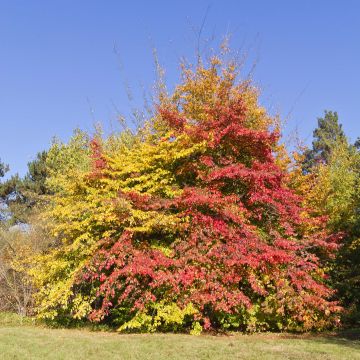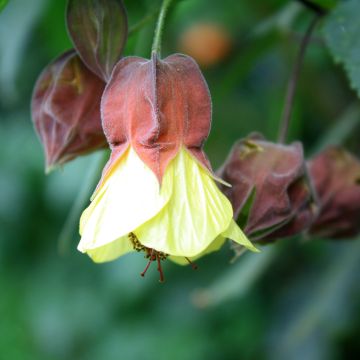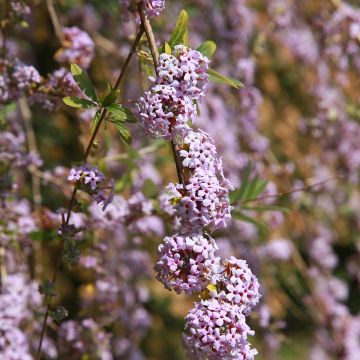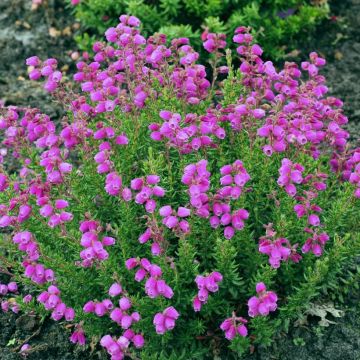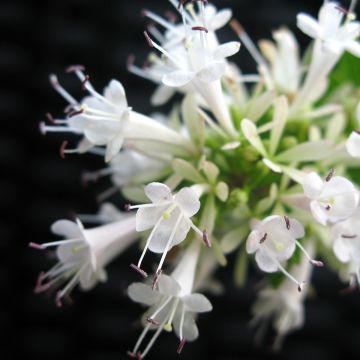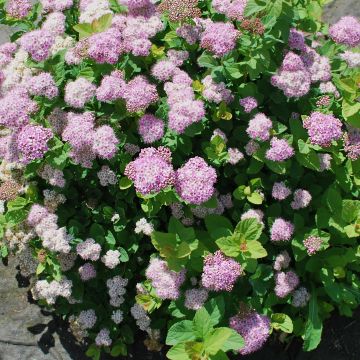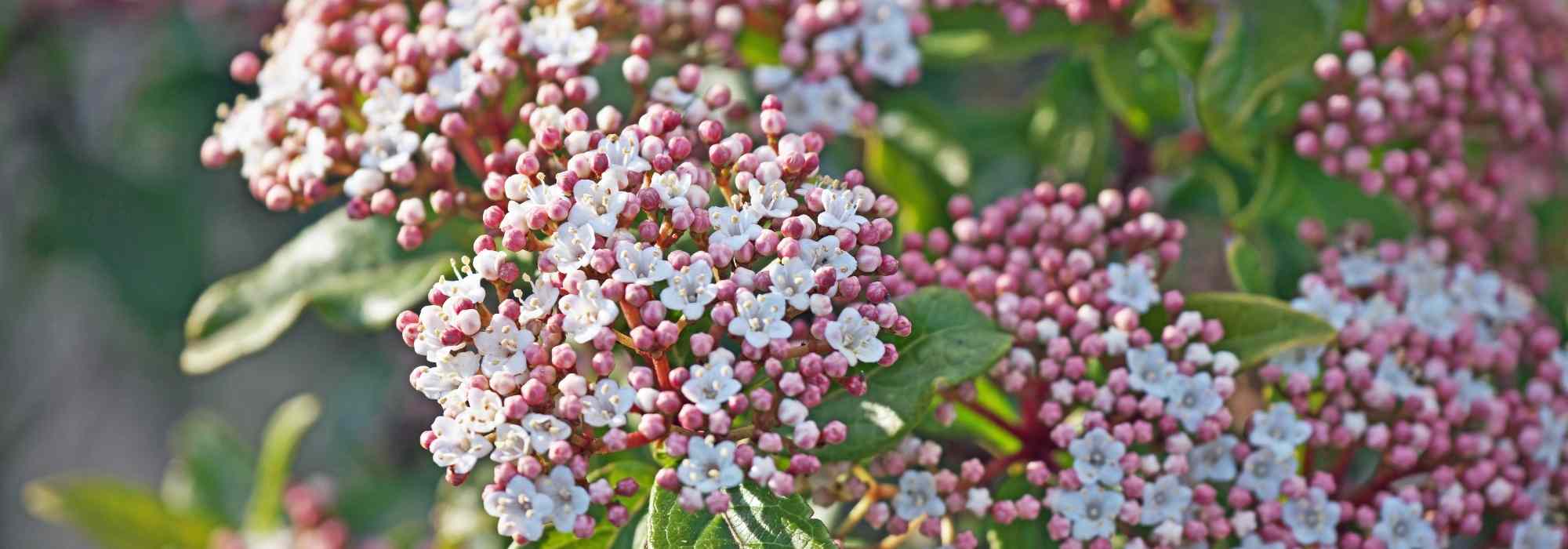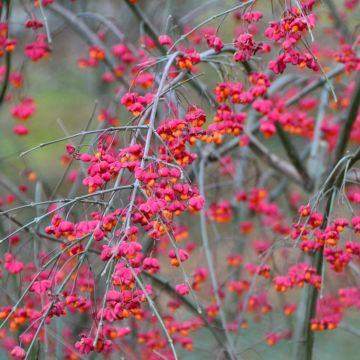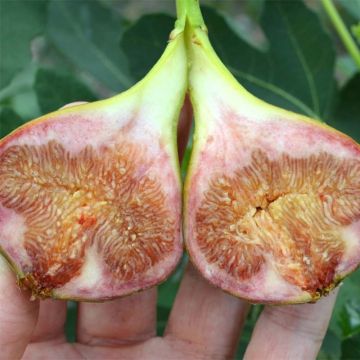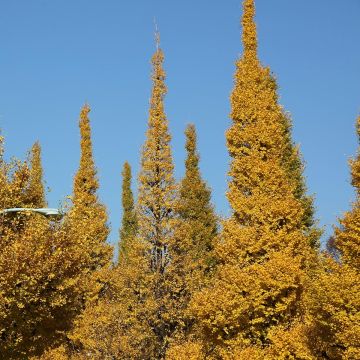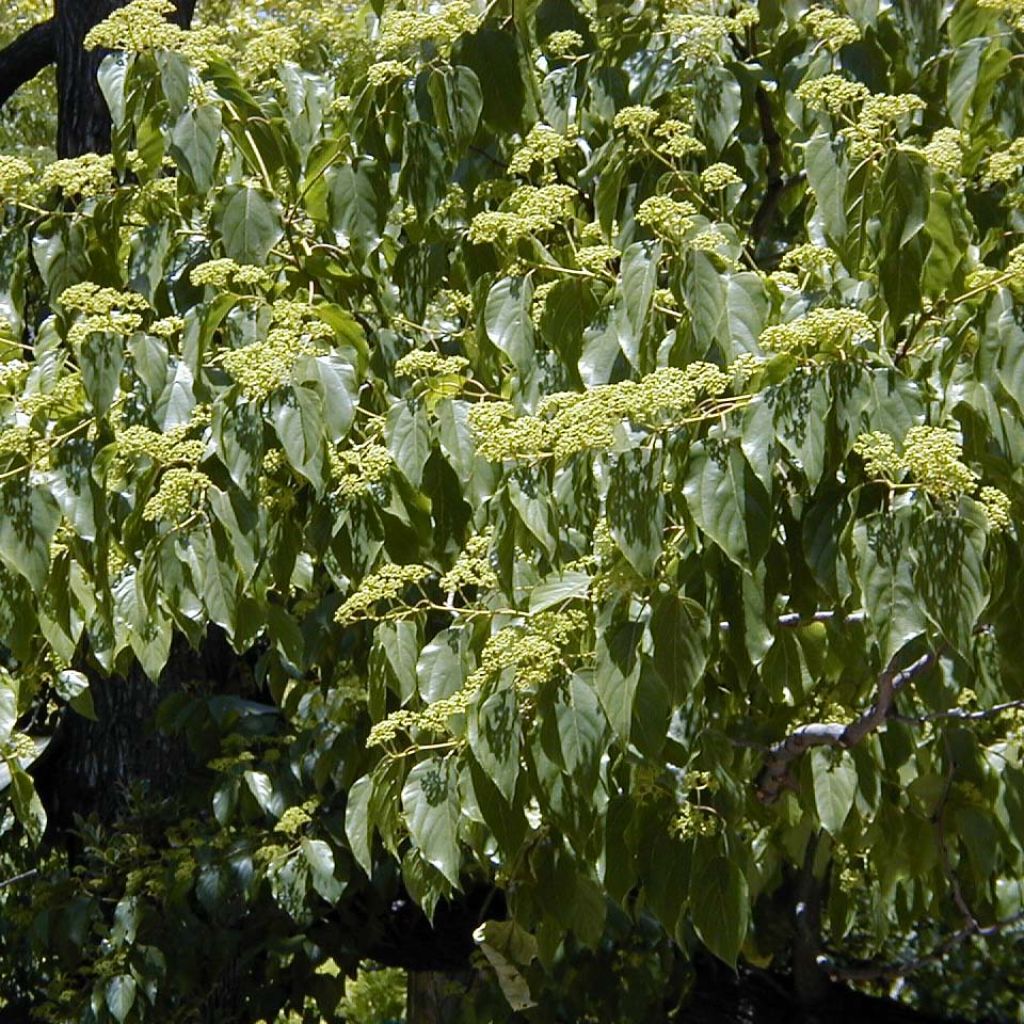

Hovenia dulcis


Hovenia dulcis
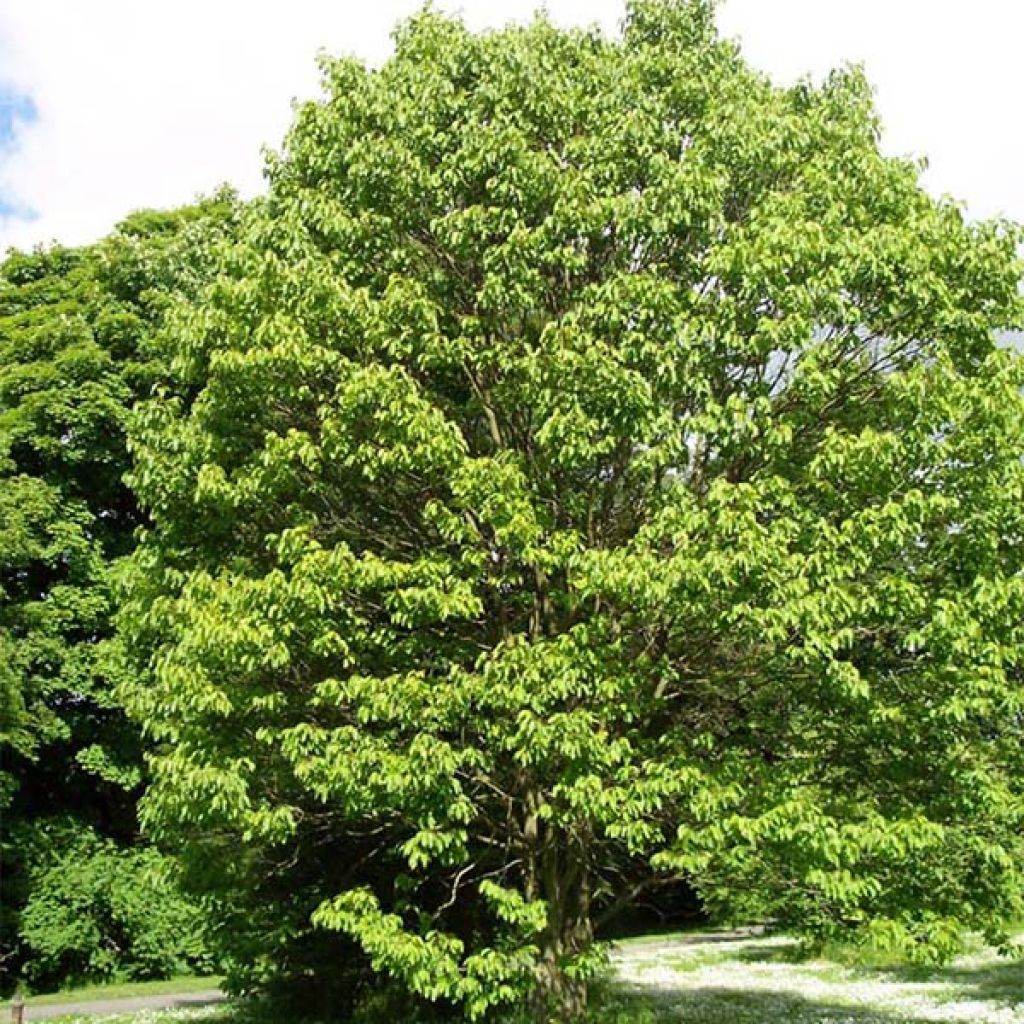

Hovenia dulcis
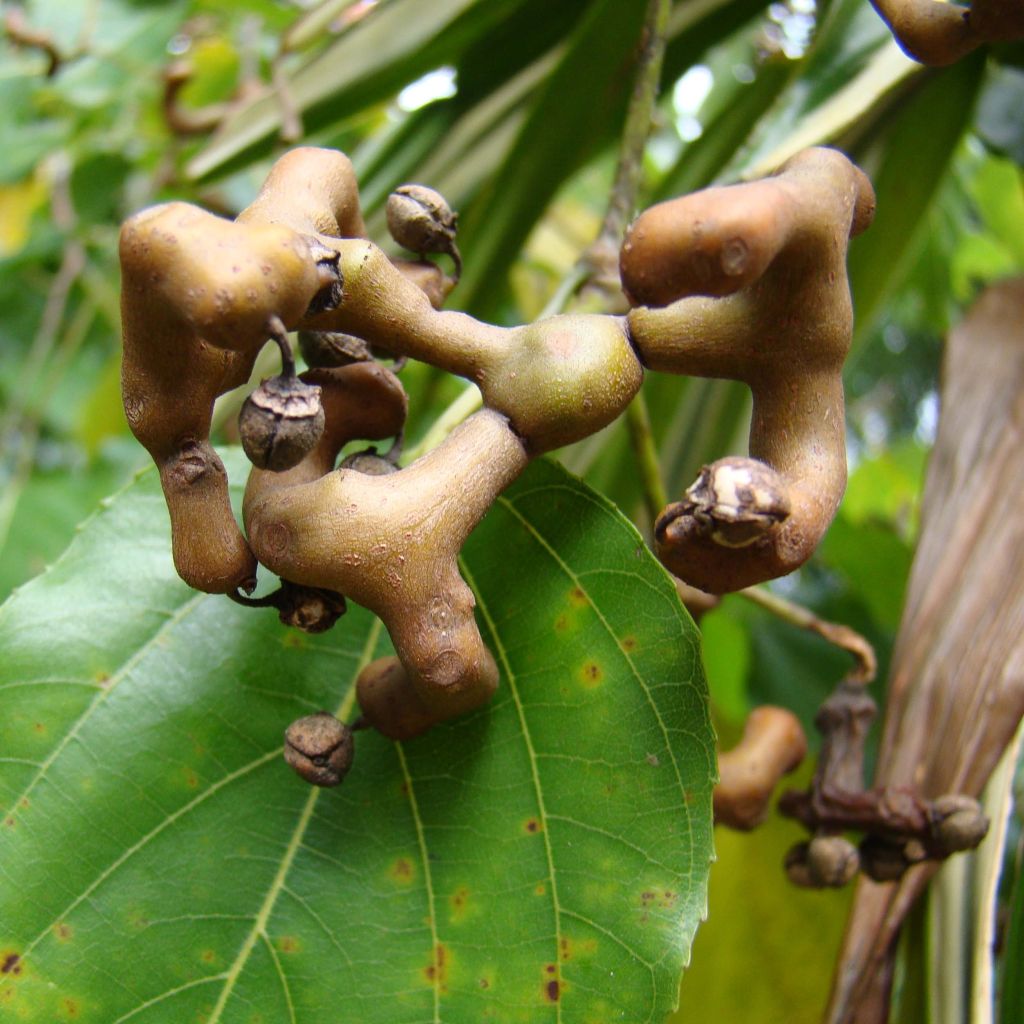

Hovenia dulcis
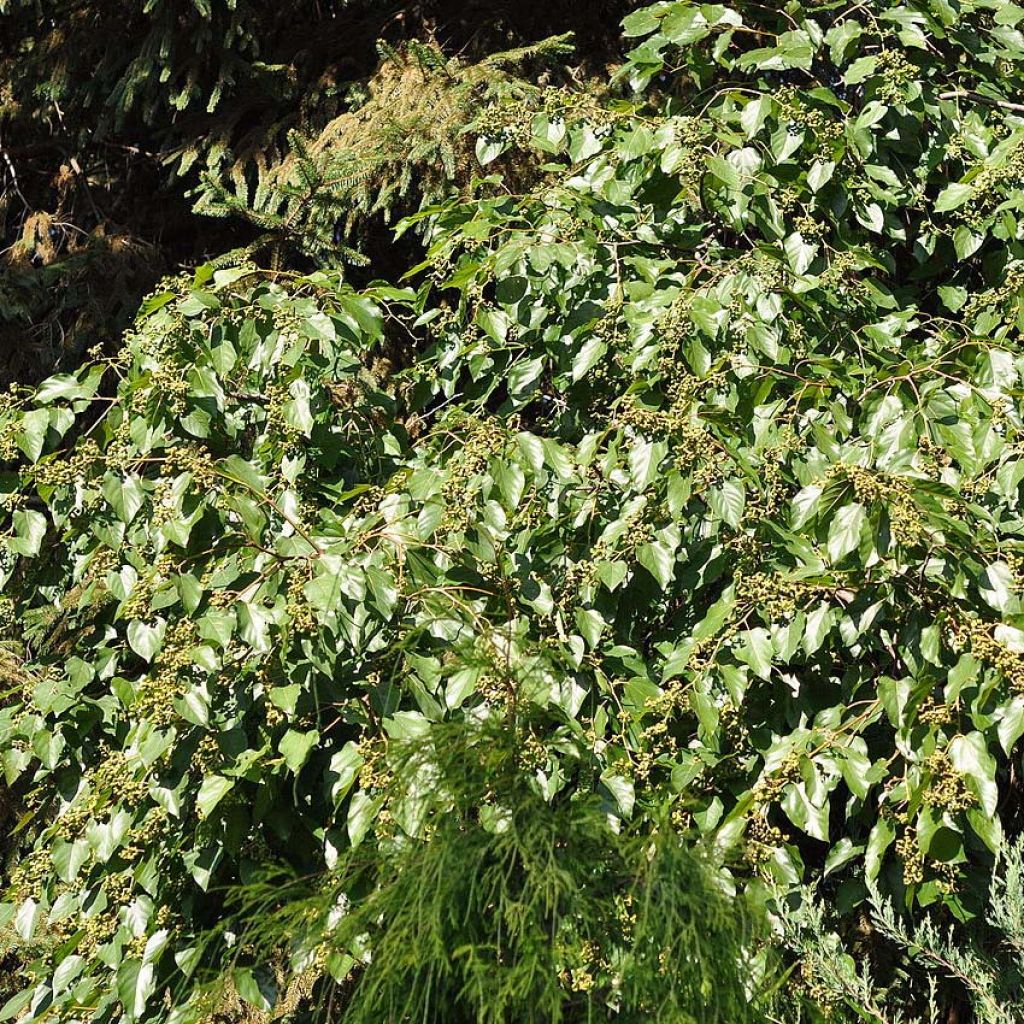

Hovenia dulcis
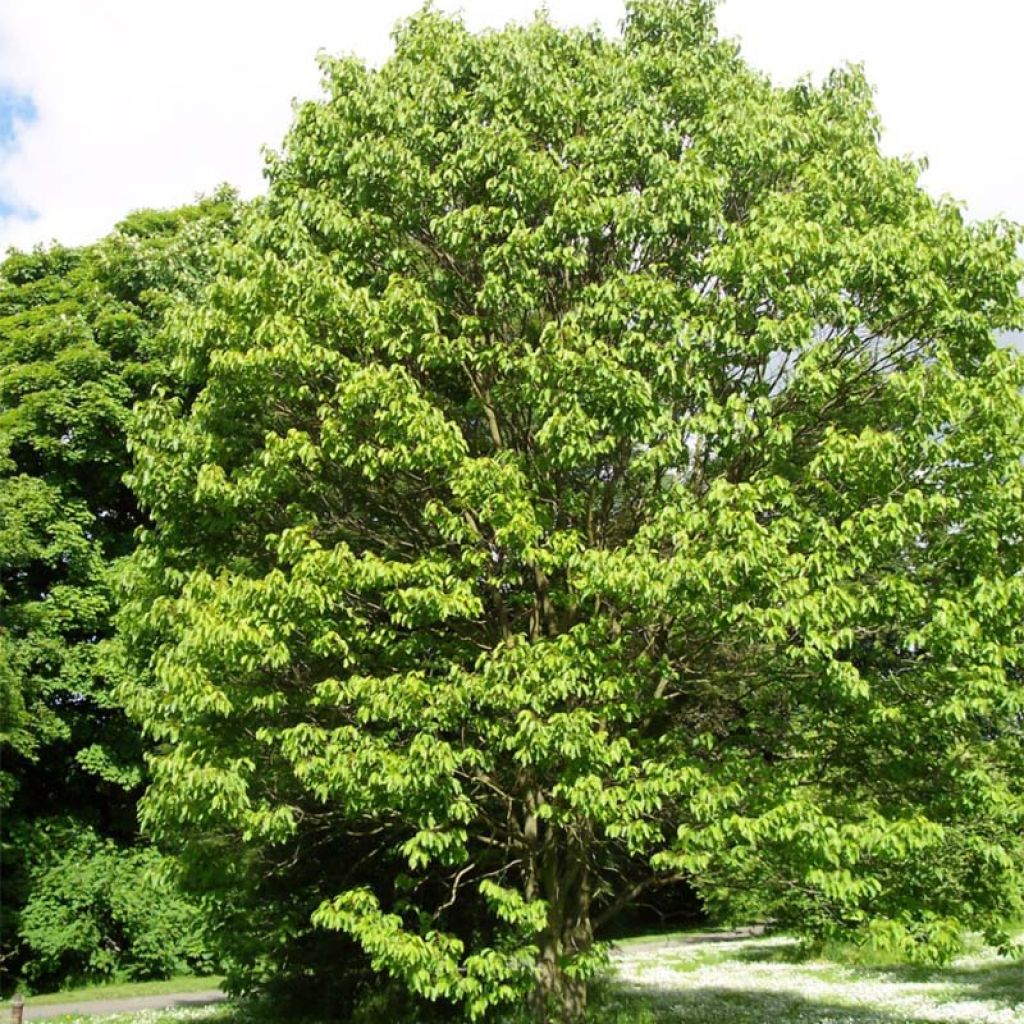

Hovenia dulcis
Hovenia dulcis
Hovenia dulcis
Chinese Raisin Tree, Japanese Raisin Tree, Oriental Raisin Tree
Fast delivery. Upon receipt: several broken branches, crushed root ball for 1 of the bushes. Young plants of about 50 cm (20in), healthy foliage, appearing vigorous.
Jean-Philippe, 27/08/2020
Special offer!
Receive a €20 voucher for any order over €90 (excluding delivery costs, credit notes, and plastic-free options)!
1- Add your favorite plants to your cart.
2- Once you have reached €90, confirm your order (you can even choose the delivery date!).
3- As soon as your order is shipped, you will receive an email containing your voucher code, valid for 3 months (90 days).
Your voucher is unique and can only be used once, for any order with a minimum value of €20, excluding delivery costs.
Can be combined with other current offers, non-divisible and non-refundable.
Home or relay delivery (depending on size and destination)
Schedule delivery date,
and select date in basket
This plant carries a 24 months recovery warranty
More information
We guarantee the quality of our plants for a full growing cycle, and will replace at our expense any plant that fails to recover under normal climatic and planting conditions.
Would this plant suit my garden?
Set up your Plantfit profile →
Description
Hovenia dulcis is a beautiful ornamental tree bearing unusual partly edible fruits, which earned it its name of Chinese Raisin Tree. The fleshy petioles that bear its fruits are consumed, particularly in Japan and China. Their flavour, somewhat sweet and sugary, recalls that of pears, figs or currants depending on one's palate. It is also very ornamental due to its discreetly exotic appearance: it bears large leaves with a shiny finish, nicely coloured in autumn, and in winter reveals grey bark that has long cracks on aged specimens. If its petioles are a delicacy for humans, its panicles of yellowish-white flowers literally drive bees crazy in summer. It is easy to grow in temperate climates that are not too dry and in any type of neutral to slightly limestone soil provided it is correctly drained. A tree to discover!
The Hovenia genus only contains two species of deciduous Asian tree, but only Hovenia dulcis is cultivated. Belonging to the Rhamnaceae family, it is native to Japan, eastern China and Korea, and widespread in the Himalayas up to an altitude of 2000 m (6561 ft). This tree with a single trunk develops a rounded crown carried by a rather high fork. It will reach 8 to 10 m (26 ft to 32 ft) in height by 4 to 5 m (13 ft to 16 ft) in width in temperate climates. Its growth is moderately rapid, in the region of 20 to 30 cm (7.9 to 11.8 in) per year depending on the growing conditions. It bears a deciduous foliage, composed of large and quite soft ovate to cordiform leaves, 10-15 cm (3.9-5.9 in) long, which are strongly veined. They are arranged alternately on slightly trailing branches and their colour is a satin grey-green, becoming golden-yellow in October. Flowering takes place in July-August. At the end of the branches appear inflorescences of 4 to 6 cm (1.6 to 2.4 in) in diameter, composed of small whitish flowers, which are extremely melliferous. After pollination, the fruits form while the peduncles that carry them begin to swell. They then take on a characteristic fleshy and nodose appearance and a translucent brown colour. At their end, small round and brown fruits develop, which are not edible. The fruits of the Chinese Raisin Tree ripen in September-October, when the peduncles measure almost 20 cm (7.9 in). Their sweet taste simultaneously evokes dried grapes, pears, dried figs or jujubes. The peduncles are consumed once they have fallen to the ground (either as they are, or alternatively cooked in compote or jam or even dried). Ten-year-old and older specimens display a long cracked grey bark that further enhances the charm of this decidedly unusual tree.
Hovenia dulcis is beautiful planted in a grove at the back of flower beds, or isolated, in a wild-style garden, a curious garden or even in large Japanese scenes. It is exotic enough to attract the eye, but it also knows how to blend into a more classic landscape and its good adaptation to temperate climates allows it to be adopted in many regions. It is both very hardy (down to -20 °C (-4 °F)) and not demanding on the nature of the soil. However, it requires sun and a certain degree of heat to be able to flower and fruit abundantly.
Report an error about the product description
Hovenia dulcis in pictures
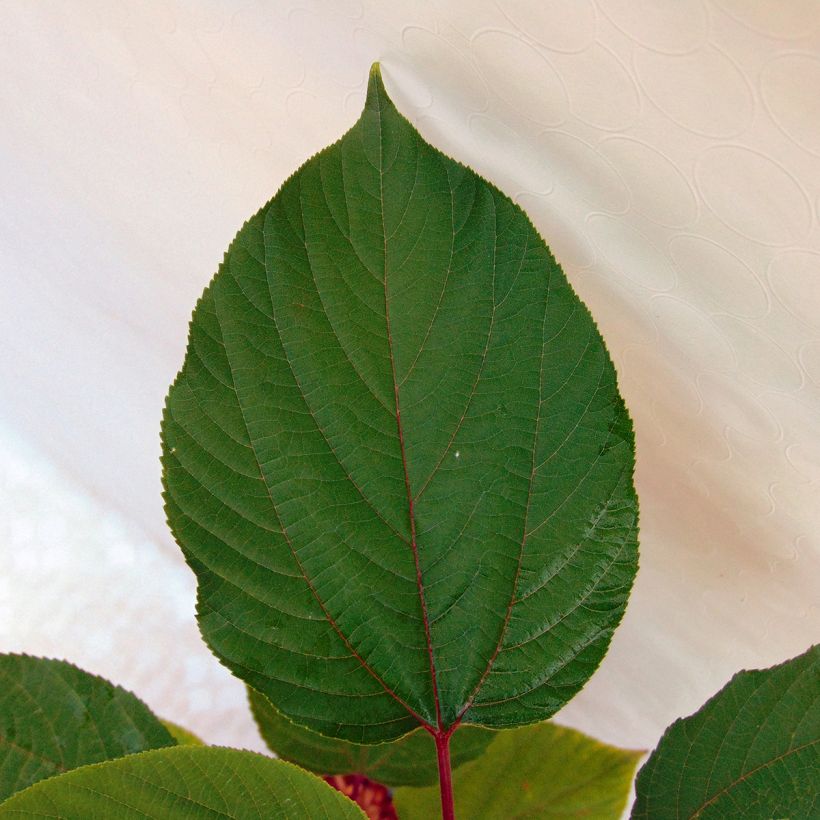



Plant habit
Flowering
Foliage
Botanical data
Hovenia
dulcis
Rhamnaceae
Chinese Raisin Tree, Japanese Raisin Tree, Oriental Raisin Tree
Himalayas
Other Shrubs A to Z
View all →Planting and care
The Chinese Raisin Tree should be planted in the autumn or spring, outside of frost periods. It should be installed in a sunny position, in fresh, deep and well-drained soil that is reasonably rich, even though this tree is very tolerant and can cope with dry situations. It displays its flowers better and produces more fruits during long and hot summers. It prefers neutral to slightly chalky soils, but accepts a wide range of soils, including when they are clayey. This tree requires very little maintenance, but it litters the soil with its fruits at the end of summer and in autumn. Its only enemy is coral disease, a cryptogamic disease caused by a microscopic fungus that can block the vessels of many trees and shrubs, gradually leading to their weakening and eventually death if the disease is not treated in time.
Planting period
Intended location
Care
Planting & care advice
-
, onOrder confirmed
Reply from on Promesse de fleurs
Similar products
Haven't found what you were looking for?
Hardiness is the lowest winter temperature a plant can endure without suffering serious damage or even dying. However, hardiness is affected by location (a sheltered area, such as a patio), protection (winter cover) and soil type (hardiness is improved by well-drained soil).

Photo Sharing Terms & Conditions
In order to encourage gardeners to interact and share their experiences, Promesse de fleurs offers various media enabling content to be uploaded onto its Site - in particular via the ‘Photo sharing’ module.
The User agrees to refrain from:
- Posting any content that is illegal, prejudicial, insulting, racist, inciteful to hatred, revisionist, contrary to public decency, that infringes on privacy or on the privacy rights of third parties, in particular the publicity rights of persons and goods, intellectual property rights, or the right to privacy.
- Submitting content on behalf of a third party;
- Impersonate the identity of a third party and/or publish any personal information about a third party;
In general, the User undertakes to refrain from any unethical behaviour.
All Content (in particular text, comments, files, images, photos, videos, creative works, etc.), which may be subject to property or intellectual property rights, image or other private rights, shall remain the property of the User, subject to the limited rights granted by the terms of the licence granted by Promesse de fleurs as stated below. Users are at liberty to publish or not to publish such Content on the Site, notably via the ‘Photo Sharing’ facility, and accept that this Content shall be made public and freely accessible, notably on the Internet.
Users further acknowledge, undertake to have ,and guarantee that they hold all necessary rights and permissions to publish such material on the Site, in particular with regard to the legislation in force pertaining to any privacy, property, intellectual property, image, or contractual rights, or rights of any other nature. By publishing such Content on the Site, Users acknowledge accepting full liability as publishers of the Content within the meaning of the law, and grant Promesse de fleurs, free of charge, an inclusive, worldwide licence for the said Content for the entire duration of its publication, including all reproduction, representation, up/downloading, displaying, performing, transmission, and storage rights.
Users also grant permission for their name to be linked to the Content and accept that this link may not always be made available.
By engaging in posting material, Users consent to their Content becoming automatically accessible on the Internet, in particular on other sites and/or blogs and/or web pages of the Promesse de fleurs site, including in particular social pages and the Promesse de fleurs catalogue.
Users may secure the removal of entrusted content free of charge by issuing a simple request via our contact form.
The flowering period indicated on our website applies to countries and regions located in USDA zone 8 (France, the United Kingdom, Ireland, the Netherlands, etc.)
It will vary according to where you live:
- In zones 9 to 10 (Italy, Spain, Greece, etc.), flowering will occur about 2 to 4 weeks earlier.
- In zones 6 to 7 (Germany, Poland, Slovenia, and lower mountainous regions), flowering will be delayed by 2 to 3 weeks.
- In zone 5 (Central Europe, Scandinavia), blooming will be delayed by 3 to 5 weeks.
In temperate climates, pruning of spring-flowering shrubs (forsythia, spireas, etc.) should be done just after flowering.
Pruning of summer-flowering shrubs (Indian Lilac, Perovskia, etc.) can be done in winter or spring.
In cold regions as well as with frost-sensitive plants, avoid pruning too early when severe frosts may still occur.
The planting period indicated on our website applies to countries and regions located in USDA zone 8 (France, United Kingdom, Ireland, Netherlands).
It will vary according to where you live:
- In Mediterranean zones (Marseille, Madrid, Milan, etc.), autumn and winter are the best planting periods.
- In continental zones (Strasbourg, Munich, Vienna, etc.), delay planting by 2 to 3 weeks in spring and bring it forward by 2 to 4 weeks in autumn.
- In mountainous regions (the Alps, Pyrenees, Carpathians, etc.), it is best to plant in late spring (May-June) or late summer (August-September).
The harvesting period indicated on our website applies to countries and regions in USDA zone 8 (France, England, Ireland, the Netherlands).
In colder areas (Scandinavia, Poland, Austria...) fruit and vegetable harvests are likely to be delayed by 3-4 weeks.
In warmer areas (Italy, Spain, Greece, etc.), harvesting will probably take place earlier, depending on weather conditions.
The sowing periods indicated on our website apply to countries and regions within USDA Zone 8 (France, UK, Ireland, Netherlands).
In colder areas (Scandinavia, Poland, Austria...), delay any outdoor sowing by 3-4 weeks, or sow under glass.
In warmer climes (Italy, Spain, Greece, etc.), bring outdoor sowing forward by a few weeks.






























